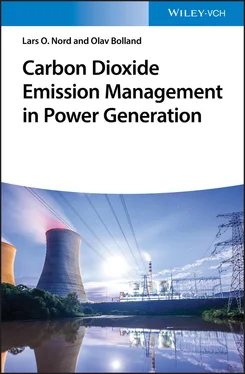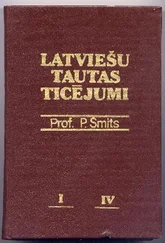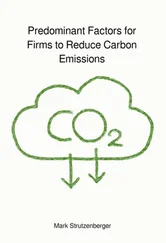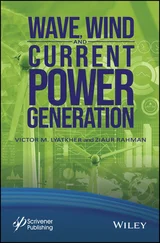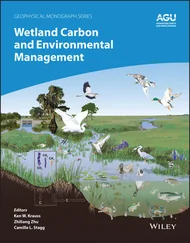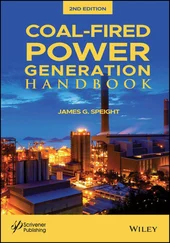..Figure 5.6 A gas turbine consisting of a compressor, combustion chamber, and...Figure 5.7 Turbine stage with vanes to the left whose main function is to ac...Figure 5.8 Temperature entropy diagram of a gas turbine cycle (a) and combin...Figure 5.9 Turbine blade with a number of holes for film cooling.Figure 5.10 Development of turbine inlet temperature (definition in ISO 2314...Figure 5.11 Classification of gas turbines by the number of shafts.Figure 5.12 Flow diagram of a gas turbine showing numbers for the indices us...Figure 5.13 Compressor characteristics.Figure 5.14 Turbine characteristics.Figure 5.15 Gas turbine exit flow rate for a combined cycle where a combinat...Figure 5.16 The relative flow rate of CO 2(left) as a function of the combin...Figure 5.17 Relation between NO xemission and adiabatic flame temperature at...Figure 5.18 Wobbe index for mixtures of hydrogen with methane (CH 4), nitroge...Figure 5.19 Gas turbine power output relative to using methane (CH 4) (left o...Figure 5.20 Gas turbine flue gas steam percentage (left ordinate, solid line...Figure 5.21 Impact on hot gas path parts' lifetime with increasing H 2O fract...Figure 5.22 Combined gas turbine and steam turbine cycle – ‘combined cycle’....Figure 5.23 Combined cycle with a single-pressure steam cycle. Note that thi...Figure 5.24 Combined cycle with a dual-pressure steam cycle. Note that this ...Figure 5.25 Combined cycle with a dual-pressure reheat steam cycle. Note tha...Figure 5.26 Combined cycle with a triple-pressure reheat steam cycle. Note t...Figure 5.27 Illustration of a typical temperature profile from the hot flue ...Figure 5.28 TQ diagram showing the heat transfer process between flue gas an...Figure 5.29 TQ diagrams for various flue gas temperatures, keeping the pinch...Figure 5.30 Four steam cycle cooling systems.Figure 5.31 Large cooling tower. The height may be up to 160 m.Figure 5.32 TQ-diagram of a water-cooled steam condenser.Figure 5.33 Typical intervals for steam condensing pressure for the four met...Figure 5.34 Example of relative steam turbine power output as a function of ...
6 Chapter 6Figure 6.1 A piston-cylinder assembly undergoes a compression by a downward ...Figure 6.2 Compression (isentropic) exit temperature for air, hydrogen, and ...Figure 6.3 Compression work depending on pressure ratio and value of the pol...Figure 6.4 Illustration of the similarity between mixing and separation.Figure 6.5 Complete separation of N gas components (left) where all gas comp...Figure 6.6 Minimum work requirement for separation, w rev, is expressed as en...Figure 6.7 Minimum work requirement for separation, w rev, depending on the c...
7 Chapter 7Figure 7.1 Enthalpy of formation for various methane combustion processes at...Figure 7.2 Efficiency of a simple cycle CH 4-fired gas turbine with varying f...Figure 7.3 Efficiency of a simple cycle CH 4-fired gas turbine with varying f...Figure 7.4 Example of net power plant efficiency calculation for a large mod...Figure 7.5 Additional consumption of fuel per kWh power for CO 2capture at d...Figure 7.6 Reduction in power plant efficiency for the minimum work requirem...Figure 7.7 Theoretical minimum reduction in efficiency caused by separation ...Figure 7.8 Reduction in power plant efficiency caused by CO 2capture and com...Figure 7.9 Mass balances for CO 2capture.Figure 7.10 The difference between ‘CO 2captured’ and ‘CO 2avoided’ for a po...Figure 7.11 Relation between CO 2capture ratio and CO 2capture efficiency, d...
8 Chapter 8Figure 8.1 The routes from formation of CO 2via various methods for separati...Figure 8.2 Principle methods for CO 2capture from power plants using carbona...Figure 8.3 Typical molar composition of flue gas from a natural gas-fired co...Figure 8.4 Typical molar composition of syngas from a natural gas-fired refo...Figure 8.5 Typical molar composition of the flue gas from a natural gas-fire...Figure 8.6 Partial pressure of CO 2from the most important CO 2producing sta...
9 Chapter 9Figure 9.1 Henry's law constant for CO 2in water.Figure 9.2 Generic illustration of the solubility of CO 2in an aqueous alkan...Figure 9.3 Illustration of the difference between a chemical and physical so...Figure 9.4 Absorption/desorption process where only the temperature swing in...Figure 9.5 Absorption/desorption process where both pressure and temperature...Figure 9.6 Packing in absorption and desorption columns/towers. Raschig ring...Figure 9.7 Vapour–liquid–solid equilibrium reactions for aqueous ammonia.Figure 9.8 Illustration of the required amount of MEA and water (15 and 30 w...
10 Chapter 10Figure 10.1 The principle manner of operation for a membrane. The sweep gas ...Figure 10.2 Principles for electrolytes (left) and ion transport membranes (...Figure 10.3 Schematic of a membrane absorber.
11 Chapter 11Figure 11.1 The basic principle of pre-combustion CO 2capture.Figure 11.2 The main chemical process steps for pre-combustion CO 2capture f...Figure 11.3 Steam reforming of methane (CH 4) for different steam-to-carbon r...Figure 11.4 Air-blown partial oxidation of methane (CH 4) for different steam...Figure 11.5 Oxygen-blown partial oxidation of methane (CH 4) for different st...Figure 11.6 Achievable H 2/CO ratios of reforming technologies. The values wi...Figure 11.7 The ‘gasification footprint’ shows key characteristics for a giv...Figure 11.8 Classification of gasifier operating principles. (a) Moving/fix...Figure 11.9 Sasol–Lurgi dry ash gasifier.Figure 11.10 BGL gasifier.Figure 11.11 Siemens Fuel Gasification (SFG) gasifier, formerly known as t...Figure 11.12 Temperature increase over water–gas shift reactor (WGS), with a...Figure 11.13 H 2/CO ratio at the exit of the water–gas shift reactor (WGS) as...Figure 11.14 Integration of water-gas shift and CO 2capture processes. By co...Figure 11.15 Integration of water-gas shift and CO 2capture processes. By co...Figure 11.16 Integration of the reforming, water-gas shift, and CO 2capture ...Figure 11.17 Integration of the reforming, water-gas shift, and CO 2capture ...Figure 11.18 Example of a membrane-enhanced reforming reactor.
12 Chapter 12Figure 12.1 Classification of pre-combustion methods for CO 2capture includi...Figure 12.2 Process flow diagram of integrated gasification combined cycle (...Figure 12.3 The natural gas reforming process with the additional steps (WGS Figure 12.4 The fuel conversion process including the CO 2capture (left box)...Figure 12.5 Example of a process flow diagram for an integrated reforming co...
13 Chapter 13Figure 13.1 Classification of post-combustion methods for CO 2capture includ...Figure 13.2 Classification of post-combustion recirculation methods for CO 2...Figure 13.3 Power plant with CO 2capture using chemical absorption. The flue...Figure 13.4 Dew point temperature or saturation temperature for water depend...Figure 13.5 The ratio ( α ) of heat to the steam turbine power output whe...Figure 13.6 Fan work for compressing the flue gas going through the absorber...Figure 13.7 Combined cycle with partial recirculation of flue gas. After the...Figure 13.8 Combined cycle with integrated absorption process. (1) Turbine h...Figure 13.9 The Sargas cycle that is derived from PFBC technology. CO 2captu...Figure 13.10 The Combicap cycle.
14 Chapter 14Figure 14.1 Classification of oxy-combustion methods for CO 2capture includi...Figure 14.2 The need for oxygen for different fuels. The three right-most ba...Figure 14.3 Methods for separation of oxygen from air.Figure 14.4 Boiling point diagram for oxygen–nitrogen.Figure 14.5 Boiling point diagram for oxygen–argon.Figure 14.6 Cryogenic air separation with a double-column system and compres...Figure 14.7 Cryogenic air separation with a double-column system and compres...Figure 14.8 Details of the condenser–reboiler connection between the HP and ...Figure 14.9 Principle of a chemical looping combustion (CLC) process.Figure 14.10 Flow diagram of a pulverised coal oxy-combustion plant.Figure 14.11 Flow diagram of a circulating fluidised bed oxy-combustion proc...Figure 14.12 Water cycle: simplified flow diagram.Figure 14.13 S-Graz cycle: simplified flow diagram.Figure 14.14 Semi-closed oxy-combustion-combined cycle (SCOC-CC): a simplifi...Figure 14.15 AZEP – advanced zero emission power plant.Figure 14.16 Solid oxide fuel cell (SOFC) – pressurised and integrated in a ...Figure 14.17 Solid oxide fuel cell (SOFC) – pressurised and integrated in a ...Figure 14.18 Three alternatives for completing the oxidation of the remainin...Figure 14.19 Non-reheat CLC-combined cycle-simplified flow diagram.
Читать дальше
